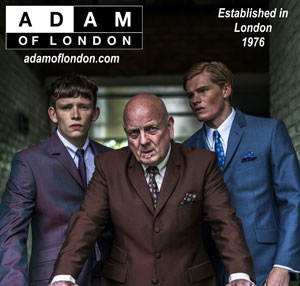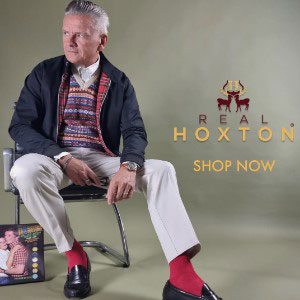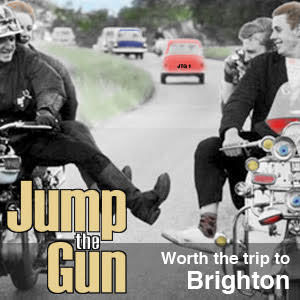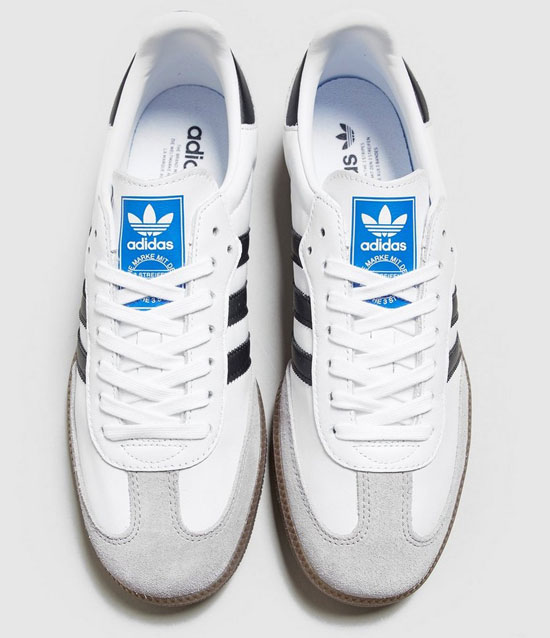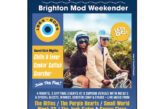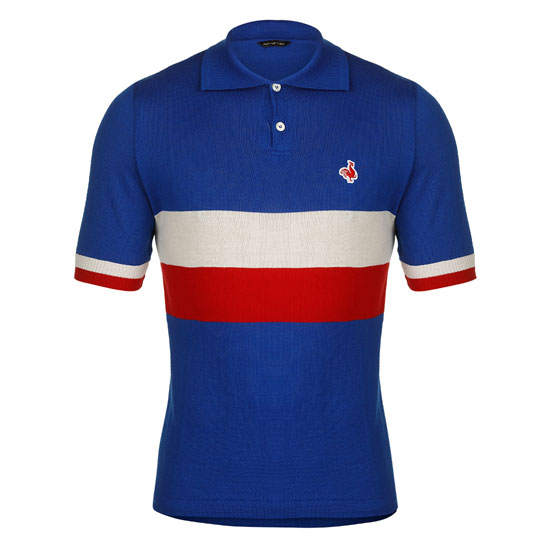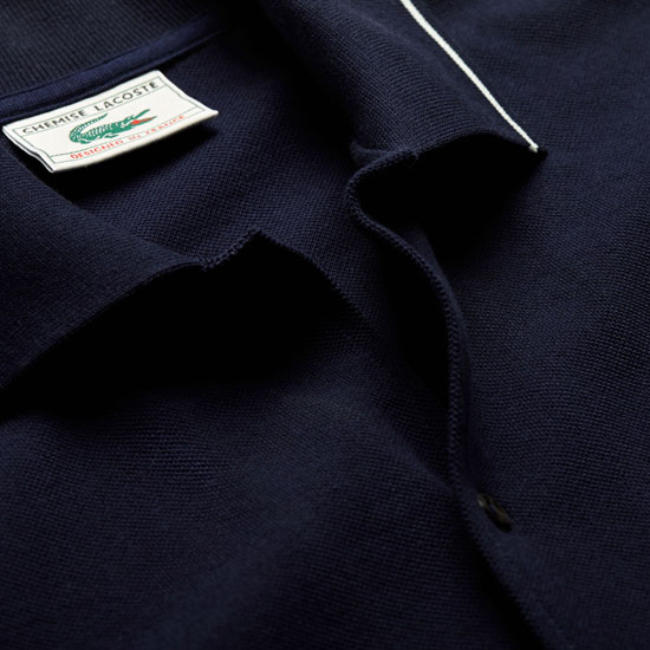
Mods and Lacoste should, on the face of it, be made for each other. But history, and especially the 1980s, has meant that’s not the case.
Lacoste is a heritage sportswear label. You could say it was the very first label. The company was founded back in 1933 and can lay claim to two things. First off, it was the first maker of the tennis polo shirt, courtesy of Rene Lacoste, a couple of decades ahead of Fred Perry. Secondly, it was the first label to use a logo on its clothing. The mini ‘crocodile’ is instantly recognisable throughout the world.

Back in the 1930s, tennis players were still playing matches in shirt sleeves. The arrival of a polo shirt changed everything, both in the tennis world and in the fashion world. Not that it was aimed at anyone other this tennis players initially. But it was a game changer. Lacoste had the market to itself for some years.
Then along came Fred Perry.

British tennis player Fred Perry entered the market in 1952, introducing the M3, the original Fred Perry polo shirt, in either white or black. It was very much a tennis piece, but by wearing it off-court, Perry hinted at its wider potential in the clothing market. That was a taster before the next big jump – the arrival of the M12 polo in various colours and with the trademark twin tipping.

The smart look, the less mainstream nature of the design, and the ever-changing colour range led to the original Mods taking it up, the first (and certainly not the last) to wear Fred Perry as a sign of identity. Fred Perry became streetwear and paved the way for many other labels to do much the same.
And so it continued over the decades for Mods, hard Mods, skinheads, and even some punks and later Britpoppers. Fred Perry in the UK is the ultimate streetwear clothing label. Affordable (although perhaps less so now), accessible, but with a tribal belonging and anti-establishment vibe about it.

Lacoste was always less of a brand of the streets. In Europe, it was pitched as something of a premium sportswear brand and in the US, where it was marketed as Izod Lacoste, and initially sold in more pricey outlets (including Brooks Brothers). It also gained a reputation as something of a ‘preppy’ brand. That’s probably still the perception today in the US.
In the UK, Lacoste wasn’t even at the races and the clothing wasn’t marketed much here for some years. At least, not in the ‘fashion’ sense, Perhaps because Fred Perry led the streets. Fred Perry was a very British brand which hadn’t rally crossed over to streetwear as much beyond the UK. The UK was its core market.
But things were about to change – and that was down to the casual movement. Now, I haven’t got the time or inclination to discuss casuals here, but that scene is key to where Lacoste was and perhaps still is. If you want a good read on that front, have a read of Mods and casuals by Gavin Henderson here.
Lacoste, like many similar European labels, became sought-after items for football fans and the growing casual scene in the 1970s. By fair means or foul, the polo shirts were acquired by followings in Europe, particularly Liverpool fans. Lacoste and its pastel polo shades became status symbols within that movement and on the terraces.

The popularity led to Lacoste having a strong presence on the high street, both in terms of shops and visibility on customers.
Back in the 1980s, most people had a youth cult they were aligned to, and what you wore was a symbol of where you belonged and who you hung out with. For Mods and skinheads, Fred Perry reigned supreme when it came to off-the-peg casual clothing.
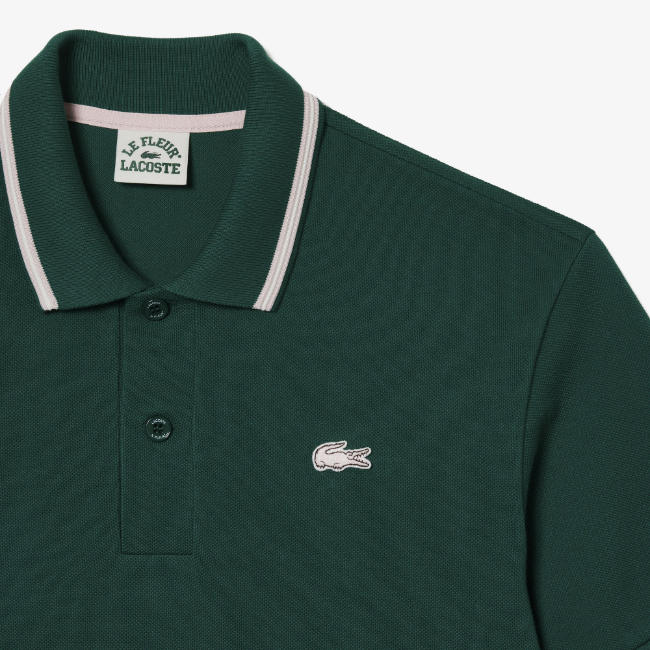
For casuals themselves, Lacoste and similar European sportswear labels were the badges of honour. And there were never any friendly alliances. The 1980s was a violent time on the streets, and even 40 years on, that era has left its mark, even on people who might not even have been born at the time.
Much of the Mod scene is still rooted in the rules and conventions of the 1980s. Perhaps because many people who discovered Mod then are still key players within it. The revival and its aftermath created a new Mod scene very different to the one 20 years previous. Like all youth cults, it created its own identity, especially in terms of music, scooters and clothing. Although rules weren’t written down, you knew what Mods wore…and didn’t wear.

And Lacoste was a casual label. Looking at it outside of that ‘80s context, it seems slightly ridiculous. Lacoste produces good quality smart sportswear with an eye on heritage and with ‘classics’ that don’t look a great deal different to the Fred Perry vibrations, Throw in some European cool and a touch of ‘premium’ and it should be nailed on as a Mod brand, But it isn’t.
Although some do. I recall one high-profile Mod (I’ll not name him to save embarrassment) jumping on a plane in a Lacoste v-neck heading to a Swedish Mod rally; he looked the part – but he’s an exception rather than the rule.
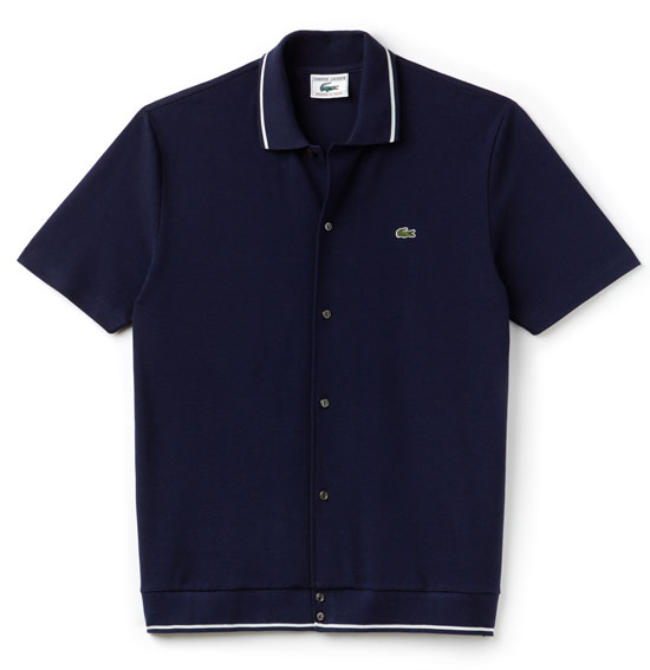
I’m not saying that all of its output appeals to Mods; far from it. The label has as much ‘fashion’ output as Fred Perry today. Maybe more, But as you can see from the images on this page, the heritage range is always available, including the original polo shirts, knitwear, Harrington jackets, and more. There’s even the occasional archive release, too, like the limited edition 1960s knit from a few years back.
Whether it works for you might be down to whether you are still fighting that battle of four decades back. Fred Perry is still doing some very nice clothing, as are plenty of other smart sportswear labels right now. This isn’t in any way a slight against the Laurel Wreath, which I’ll likely have in my wardrobe until the day I die.

What I am saying is that it’s perhaps time to put the 1980s aside and look at Lacoste for what it is. A similar label to Fred Perry with its own European charm. Maybe give it a look – especially with the sales coming up. Or maybe giving the ‘croc’ a go is a step too far. Maybe those rules of the 1980s still apply.

